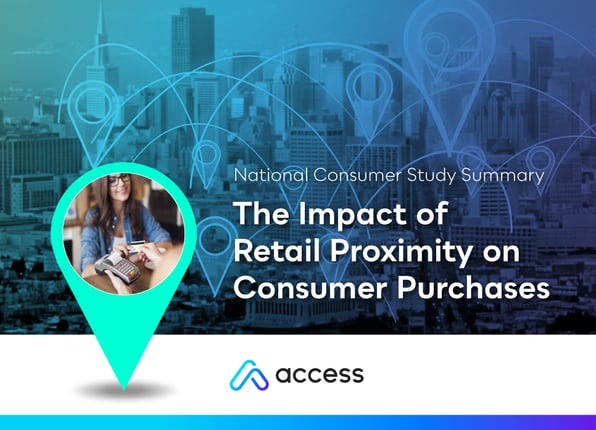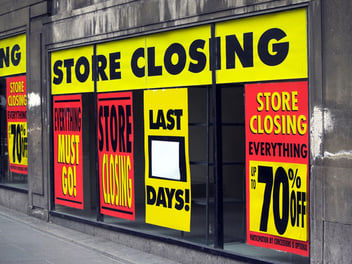Research: How Far Will Consumers Travel to Make Routine Purchases?
For decades, the conventional wisdom has touted this stat: 80% of consumer spending occurs within 20 miles of home.
We've cited that stat before, as have countless other respected sources like Forbes, Ebay, and MediaPost. All of which have quoted this statistic without attribution.
The problem is, the stat is a myth. As a verifiable statistic, it doesn't exist. This writer documented his fruitless endeavor to find the original source.
Typically, most people cite the stat by pointing to an official source identified simply as “US Census data,” but no link to an actual study is given.
It really sounds good and seems to make sense.
But then again, what about the "retail apocalypse?" What about the so called growth of online spending?
Does the 80/20 stat still hold up today?
We wanted to know. We've built our discount loyalty network around local businesses across the US. So if we intend to stay relevant with our clients and their members, we have to know if buying local still matters as it once did.
Plus, we wanted to know more.
- How far do people go for food? For gas? For clothes?
- Are rural consumers different than urban dwellers?
- When you take proximity out of the equation, what criteria do people use to decide where to spend?
We commissioned a comprehensive national survey.
The study excludes mandatory expenditures such as taxes, mortgage/rent, utilities, health care, retirement, etc, and used the Bureau Labor Statistics definition to include everyday spend categories such as food, apparel and services, household expenses, entertainment, transportation, personal care products and services, etc., which reflects 90.2% of consumers’ disposable income.
The survey was offered randomly to potential respondents, and taken from a large pool of contacts, representing various consumer groups and interests, including employed professionals of varying education levels, and individuals associated with not-for-profit membership groups, unions, students & trade associations, affinity groups, education organizations, business and finance professionals, and stay-at-home parents. 2,131 completed surveys were received, reflecting a broad consumer demographic and a margin of error of +/- 2.12%.
Here's what we found.
Key Findings
Finding #1: Consumers Typically Refuse to Travel More Than 20 Miles for Their Everyday Purchases
How far consumers will typically travel for their everyday purchases, like fuel, food, clothing, etc? With regard to the more commonly referred to statistic referenced previously (“income spent within 20 miles”) the study provides the following result:
- 93.2% of consumers typically travel 20 minutes or less to make their everyday purchases.
Additionally, the study also reveals this:
- 87% of consumers typically travel 15 minutes or less to make their everyday purchases.
Finding #2: Urban Consumers Are Predisposed to Traveling Less than 20 Minutes to Make their Everyday Purchases.
The study found:
- 97.2% of urban consumers typically travel 20 minutes or less to make their everyday purchases.
With 83% of consumers residing in urban areas, (based on “Core Based Statistical Area” as defined by the Federal Office of Management and Budget,) they make up the most significant concentration of customers and retailers, reflecting the vast majority of retail expenditures.
Not only do urban consumers spend 18% more than rural households, but urban households bring home 32% more in annual income than rural households.
Our data is not unique in exposing the challenges rural consumers have in making their everyday purchases, and how rural retailers naturally must attract consumers from greater distances. Not surprisingly, 70.3% of rural consumers typically travel 20 minutes or more to make their everyday purchases.
90/20 Is More Accurate
The bottom line is: the 80/20 rule is an understatement.
93% of consumers say they typically travel NO MORE than 20 minutes to make everyday purchases.
87% of them won't go beyond 15 minutes.
Furthermore, the more frequent the purchase, the less consumers will travel: 6 minutes for gas and 8 for groceries, but 19 minutes for clothing and 17 for movies.
And when you remove proximity as a factor, people look to price and quality (each was cited by 32% of respondents).
Fitting with the data collected in our loyalty statistics database, just 6% were influenced by brand reputation and 7% by customer service.
There's far more data available in the full study. If you'd like get your own free copy, go here.
Topics: local discount content, research, Retail, ecommerce, millennials and money, coupon strategies, trends, consumer trends, loyalty statistics
Written by: Gary Toyn






.jpeg)






Share your Comment.